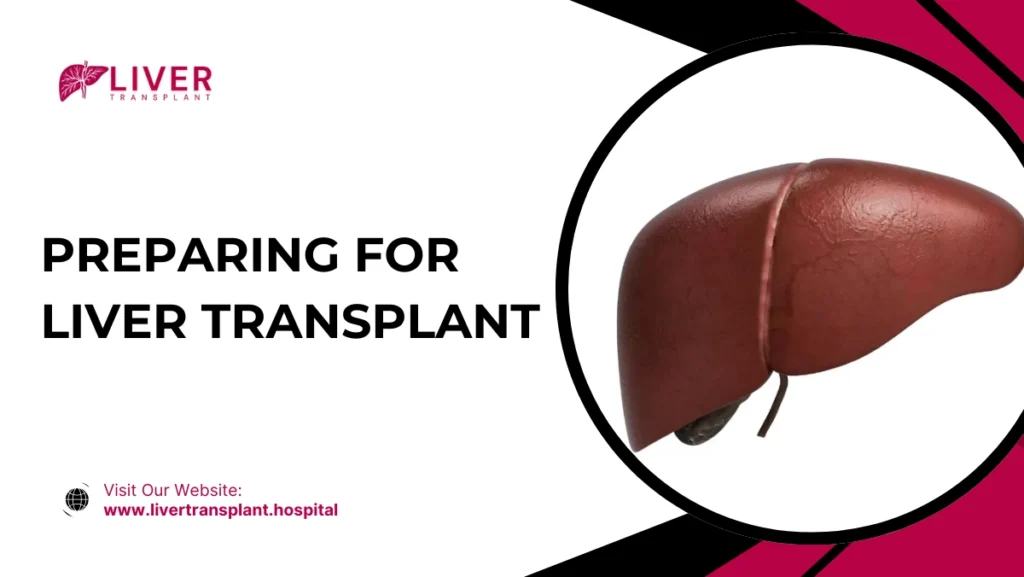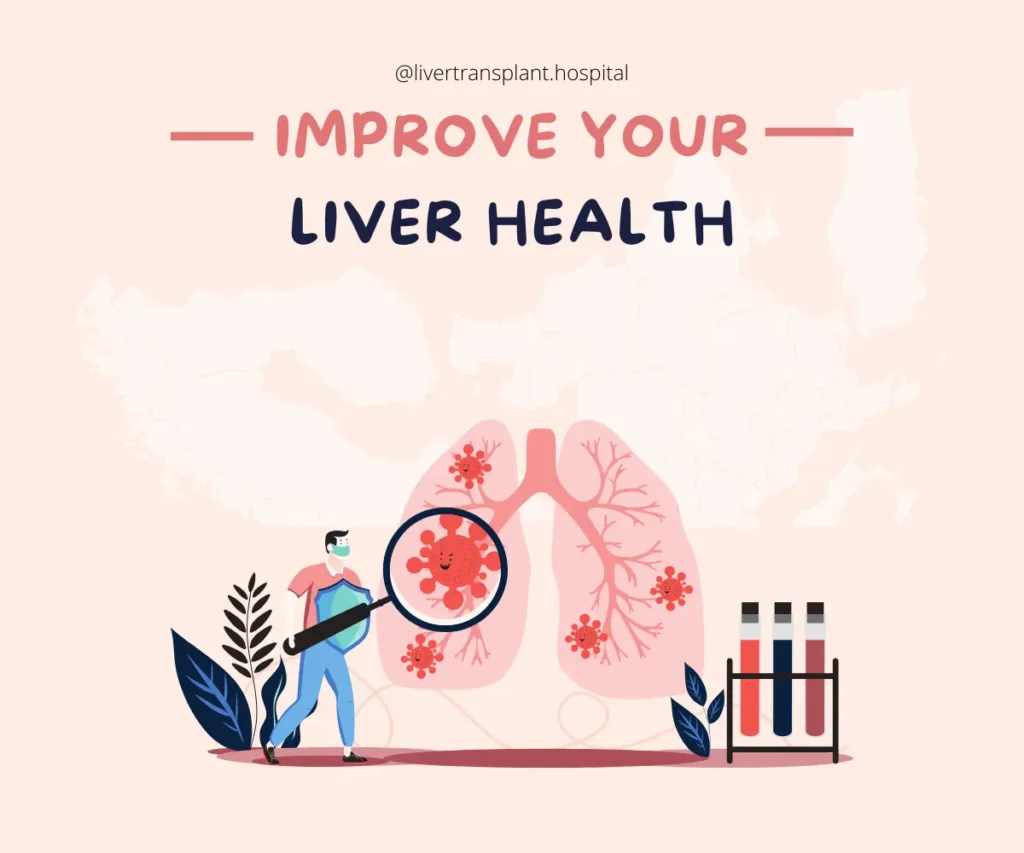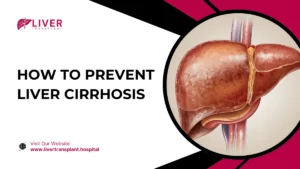Getting ready for liver transplant surgery is a life-altering process that requires both physical and mental preparation. It’s essential to focus on improving your overall health and building a strong support system. From boosting physical fitness to managing stress, every step counts towards a smoother recovery.
Get Physically Fit
One of the most critical aspects of preparing for liver transplant surgery is achieving optimal physical fitness. Being in good physical shape can help your body better withstand the challenges of surgery and speed up the recovery process. Exercise enhances cardiovascular health, improves muscle strength, and boosts your immune system, all of which are essential for a smooth recovery after the liver transplant procedure.
Simple ways to improve your physical fitness before surgery:
- Light cardio exercises: Walking, cycling, or swimming can improve your heart health and endurance without putting too much strain on your body.
- Strength training: Gentle exercises such as resistance bands or light weights help maintain muscle mass, which is vital for recovery.
- Stretching and flexibility: Activities like yoga or stretching exercises can improve your flexibility and reduce muscle tension, making it easier to move post-surgery.
- Breathing exercises: Deep breathing techniques can improve lung function, which is crucial during the surgery.
By incorporating these exercises into your daily routine, you’ll be better prepared to face liver transplant surgery. Always consult with your healthcare provider before starting any new fitness regimen to ensure it is safe and suitable for your health condition.
Fuel Your Body
Proper nutrition is a cornerstone of preparing for liver transplant surgery. What you eat before the procedure directly impacts how well your body recovers afterward. Eating nutrient-rich foods ensures that your body has the strength and energy it needs to heal efficiently. By focusing on a balanced diet, you’re giving your body the best chance at a smooth recovery following the liver transplant procedure.
- Lean proteins like chicken, fish, and legumes help repair damaged tissues and support muscle recovery.
- Fruits and vegetables are rich in antioxidants and vitamins, which boost your immune system and fight infections.
- Whole grains such as brown rice, quinoa, and oats provide sustained energy and help maintain stable blood sugar levels.
- Healthy fats from sources like avocados, olive oil, and nuts promote brain function and reduce inflammation.
Additionally, staying hydrated is crucial. Drinking enough water keeps your organs functioning properly and supports the overall healing process. If possible, consult a dietitian familiar with transplant cases to create a personalized meal plan that meets your specific needs. A well-nourished body is more resilient, better prepared for liver transplant surgery, and equipped to handle the challenges of recovery.
Mind Over Matter
Mental preparation is a critical aspect of getting ready for liver transplant surgery. The emotional and psychological challenges can be just as significant as the physical ones, and addressing these is essential for a successful outcome. Maintaining a positive mindset can help you handle stress, reduce anxiety, and improve overall well-being during the liver transplant procedure.
Here are a few ways to mentally prepare:
- Meditation and Mindfulness: These practices can help calm your mind and keep you centered, reducing feelings of stress or anxiety before the surgery.
- Therapy or Counseling: Talking to a professional can provide emotional support and help you process any fears or uncertainties surrounding the transplant.
- Knowledge is Power: Understanding the liver transplant procedure and what to expect during recovery can ease anxiety and help you feel more in control.
- Visualization Techniques: Mentally picturing a successful surgery and recovery can have a positive impact on your mindset.
Mental preparation isn’t just about reducing stress; it also involves staying mentally strong and focused. By preparing emotionally for liver transplant surgery, you create a better environment for healing and recovery, ensuring that both your mind and body are ready for the journey ahead.
Managing Stress
Undergoing liver transplant surgery can bring about a great deal of stress, both physically and mentally. It’s important to find ways to relieve stress to ensure that your body is well-prepared for the procedure and recovery. Stress management not only helps with mental clarity but also improves your body’s ability to heal and fight off infections.
Ways to relieve stress as you prepare for your liver transplant procedure:
- Deep breathing exercises: Focus on your breath, taking slow, deep breaths to calm your mind and body.
- Progressive muscle relaxation: Tense and relax different muscle groups to release physical tension.
- Mindfulness meditation: Practice being in the present moment to reduce anxiety.
- Gentle physical activities: Light exercise, such as walking or stretching, can help reduce stress hormones.
- Engaging in hobbies: Activities you enjoy, like reading, crafting, or listening to music, can provide a distraction from worries.
Incorporating these techniques into your daily routine can greatly reduce pre-surgery anxiety. Not only do these methods provide ways to relieve stress, but they also help maintain emotional balance during the challenging process of preparing for liver transplant surgery. Stay proactive in managing stress to support a smoother surgical experience and recovery.
Building a Support Network
Creating a solid support network is crucial when preparing for liver transplant surgery. Surrounding yourself with people who understand your needs can significantly reduce stress and improve your mental well-being. Whether it’s family, friends, or a group of individuals who’ve been through similar surgeries, having a support system helps you manage the challenges of the liver transplant procedure.
Here’s how you can build a strong network:
- Family and Friends: These are the people closest to you who can provide emotional support, help with daily tasks, and assist with transportation to medical appointments.
- Caregivers: Consider hiring a professional caregiver for post-surgery support. They can assist with medical needs, medication management, and physical care.
- Support Groups: Join a liver transplant support group, either in-person or online. Sharing experiences with others who understand the types of liver transplant you may be facing can offer comfort and valuable advice.
- Medical Team: Your doctors, nurses, and transplant coordinators are also part of your support system. Keep an open line of communication with them for advice and guidance throughout the process.
A well-rounded support network makes the liver transplant procedure smoother, helping you stay emotionally grounded and physically supported during your recovery.
Understanding the Waiting List
The waiting list for a liver transplant is managed meticulously to ensure that organs go to those in the most need. The factors that determine your place on the list are crucial in understanding how the process works.
Factors Affecting Priority
- Severity of Liver Disease: The Model for End-Stage Liver Disease (MELD) score is used to evaluate how urgently a patient needs a liver. The higher your MELD score, the more likely you are to receive a transplant sooner.
- Blood Type: Your blood type needs to match that of the donor. Patients with rare blood types may face longer waits, while those with common types might get a transplant faster.
- Geographic Location: Proximity to the transplant center can affect your position on the list. Organs are typically distributed within specific geographic regions to minimize the time between donation and transplant.
- Waiting List Size: A longer waiting list in your region can lead to extended waiting times. Conversely, a smaller waiting list might mean quicker access to a transplant.
Severity of Liver Disease
- Patients are evaluated based on their MELD score, which ranges from 6 (less sick) to 40 (critically ill). This score is derived from lab tests that measure liver function. The higher the MELD score, the more urgently the transplant is needed.
- Regular monitoring of your condition is essential, as your score may change over time, affecting your position on the list.
Blood Type
- Compatibility between the donor and recipient’s blood type is essential for a successful transplant. Common blood types like O and A may have more potential donors, while rare types like AB could limit options.
- Crossmatching ensures the recipient’s immune system won’t reject the new liver.
Geographic Location
- Organs are distributed based on proximity to the transplant center. This ensures that the organ remains viable during transportation. Being closer to a center with higher donor availability may improve your chances of a quicker transplant.
- In India, larger cities with more donation programs may offer better access to transplantable organs.
Waiting List Size
- The number of people awaiting a liver transplant in your region or center impacts your waiting time. Centers with smaller waiting lists may offer faster transplants, while highly populated areas could lead to longer delays.
- Regular communication with your transplant team helps you stay informed about your status and any changes on the list.
Understanding the Procedure
Before undergoing liver transplant surgery, it’s crucial to understand the different types of liver transplant procedures and what each entails. Being informed helps reduce anxiety and allows you to discuss options confidently with your healthcare team. The two main types of liver transplant procedures include living donor transplants and deceased donor transplants, each with unique benefits and risks.
Here are the most common types of liver transplant:
- Orthotopic Liver Transplant (OLT): The most common type, where the entire diseased liver is replaced with a healthy liver from a deceased donor.
- Living Donor Liver Transplant: A portion of a liver from a living donor is transplanted into the patient. The liver regenerates in both the donor and recipient over time.
- Split Liver Transplant: A single liver from a deceased donor is divided into two parts and transplanted into two recipients, usually a child and an adult.
Understanding the risks and recovery expectations for each liver transplant procedure is crucial. Talk to your surgeon about which option is best suited for your condition. Gaining knowledge about these procedures not only prepares you mentally but also empowers you to make informed decisions that will benefit your long-term health.
Preparing Your Home
After undergoing liver transplant surgery, having a well-prepared home is essential for a smooth recovery. Your home should be a space where you can focus on healing without unnecessary distractions or discomfort. Organizing your living environment before the surgery can significantly reduce stress and make daily tasks easier during the recovery process.
Key ways to prepare your home for your post-liver transplant procedure:
- Set up a comfortable rest area: Choose a quiet, comfortable place with easy access to necessities like water, medications, and entertainment.
- Stock up on supplies: Make sure you have enough food, medical supplies, and prescriptions for the first few weeks of recovery.
- Arrange for assistance: Whether it’s a family member or a friend, ensure someone is available to help with tasks such as cooking, cleaning, and transportation to follow-up appointments.
- Declutter your space: A clean, organized environment promotes relaxation and prevents potential hazards that could lead to falls or injuries.
Preparing your home for recovery after liver transplant surgery is crucial in fostering a healing environment. With everything in place, you can focus on your well-being and recovery, making the transition smoother and less stressful.
Conclusion
Undergoing liver transplant surgery is no small feat, but with the right preparation, both physically and mentally, you can set yourself up for a successful outcome. From focusing on physical fitness and nutrition to building a support network and preparing your home, these steps will help you face the surgery with confidence. The journey may be challenging, but the rewards of a healthier, longer life make every moment worth it. Take the time to prepare fully, and trust in the process.






